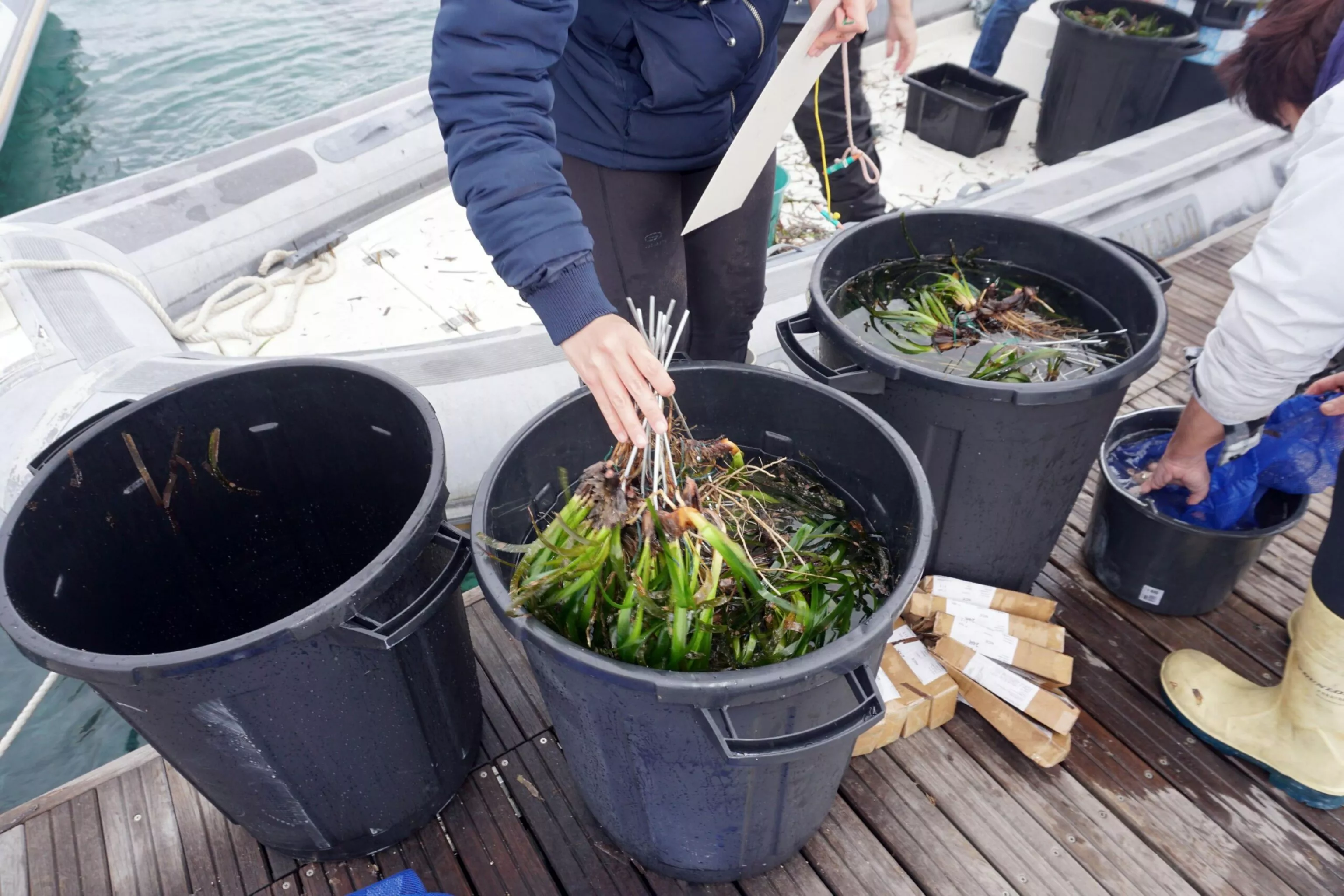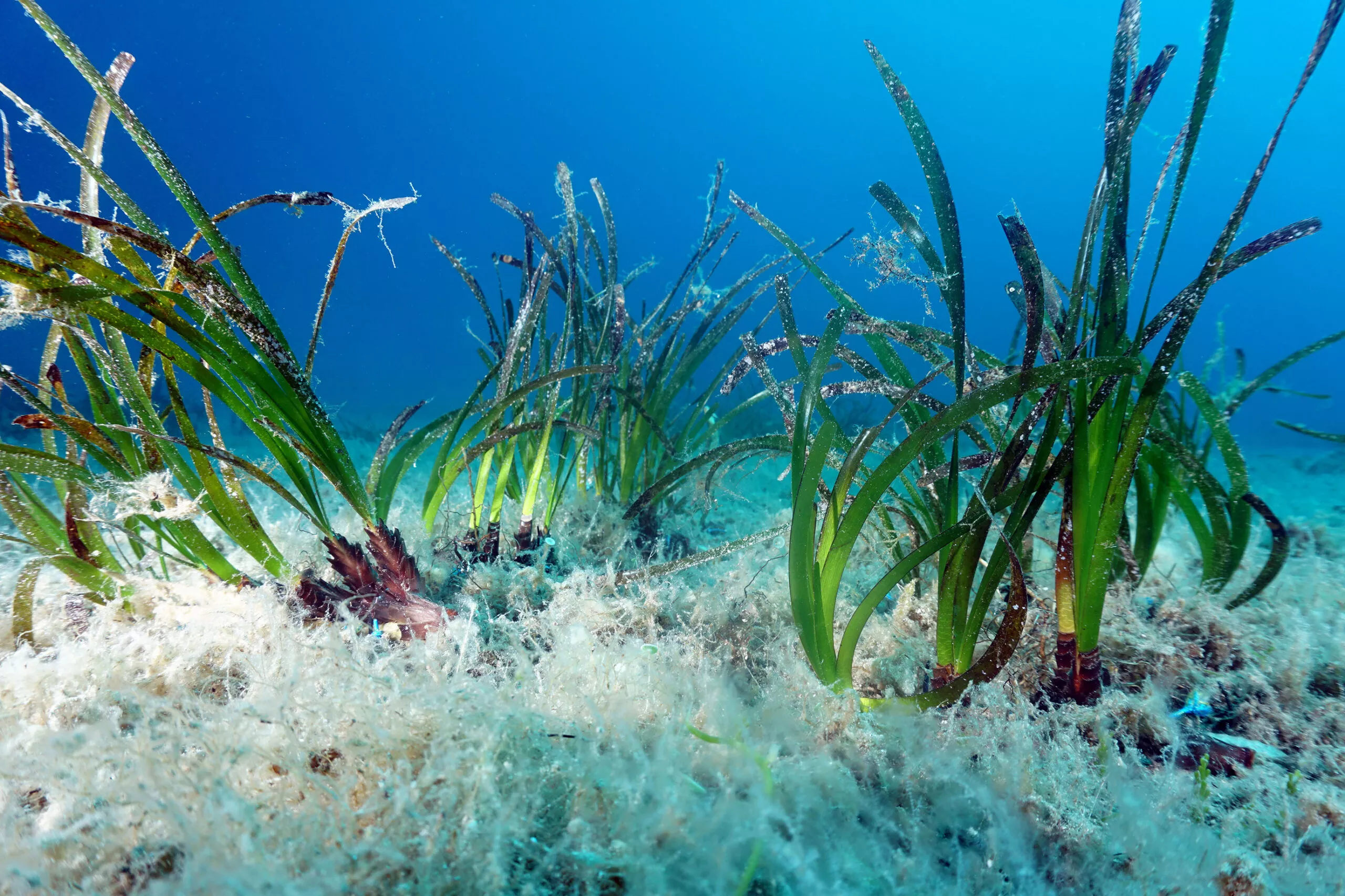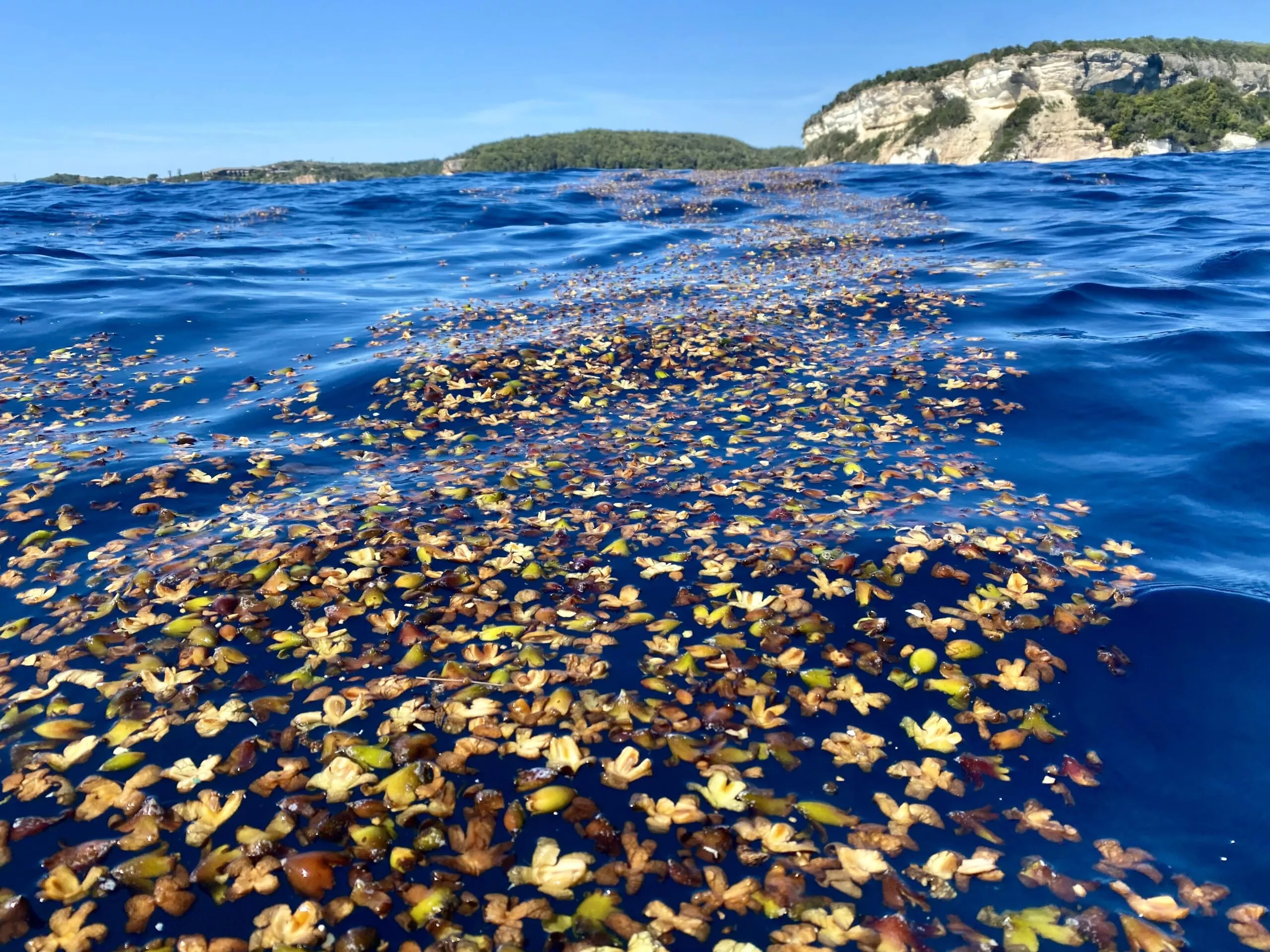The project
Posidonia: the lungs of the Mediterranean under threat
Posidonia are aquatic plants found at low depths in the Mediterranean Sea. As well as being a refuge for many marine animals, Posidonia meadows act as carbon sinks, fixing carbon underground as they grow slowly, just a few centimetres a year. In Corsica, they cover 60% of the seabed at depths of between 0 and 40 meters and, like a lung under the sea, have accumulated 15% of the carbon in the air over the last 4,000 years. Their exceptional characteristics make them an essential species in the fight against climate change.
However, human activity is upsetting this balance: in addition to the pressure exerted by climate change, the anchoring of pleasure boats in these coastal waters is uprooting the seagrass beds over several meters, and consequently destroying biodiversity.
Since 2020, the anchoring of boats over 24 meters in length has been banned in the Bouches de Bonifacio nature reserve. Following this action, the G.I.S Posidonie’s RenforC project was launched in an attempt to repair this fragile natural environment.
The program RENFORC
S.I.G Posidonie’s RenforC (Renforcement des puits de carbone en milieu marin) program involves replanting seagrass beds with cuttings in the Sant’Amanza gulf in Bonifacio, Corsica.
The project is divided into four phases:
Phase 1: The organization of a seminar to present the project to the partners and, above all, to share transplantation protocols between the project’s four partner intervention teams – THALASSA Marine research & Environmental awareness (France); Biosurvey (Italy); Instituto Mediterráneo de Estudios Avanzados (Spain); the International School for Scientific Diving “Anna Proietti Zolla” (Italy).
Phase 2: Scientific expeditions during which cuttings are taken upstream and then replanted in damaged areas by the 4 teams. Annual monitoring of the seagrass beds is then planned after the experiment, with a view to scientifically comparing the performance of the different techniques used by each team.
Not only will this program enable the restoration of a vital ecosystem, it will also contribute to scientific progress in this field by comparing different transplanting methods.
Phase 3: Experimentation with an additional protocol based on cuttings harvested from wrecks instead of transplants taken from the herbarium, to study the influence of the transplants’ origin.
Phase 4: Experimental monitoring continues with the addition of factors such as carbohydrate dosage, leaf length and growth rate. This enables us to assess the vitality of the cuttings.
At the same time, a search for Posidonia blooms was carried out.



